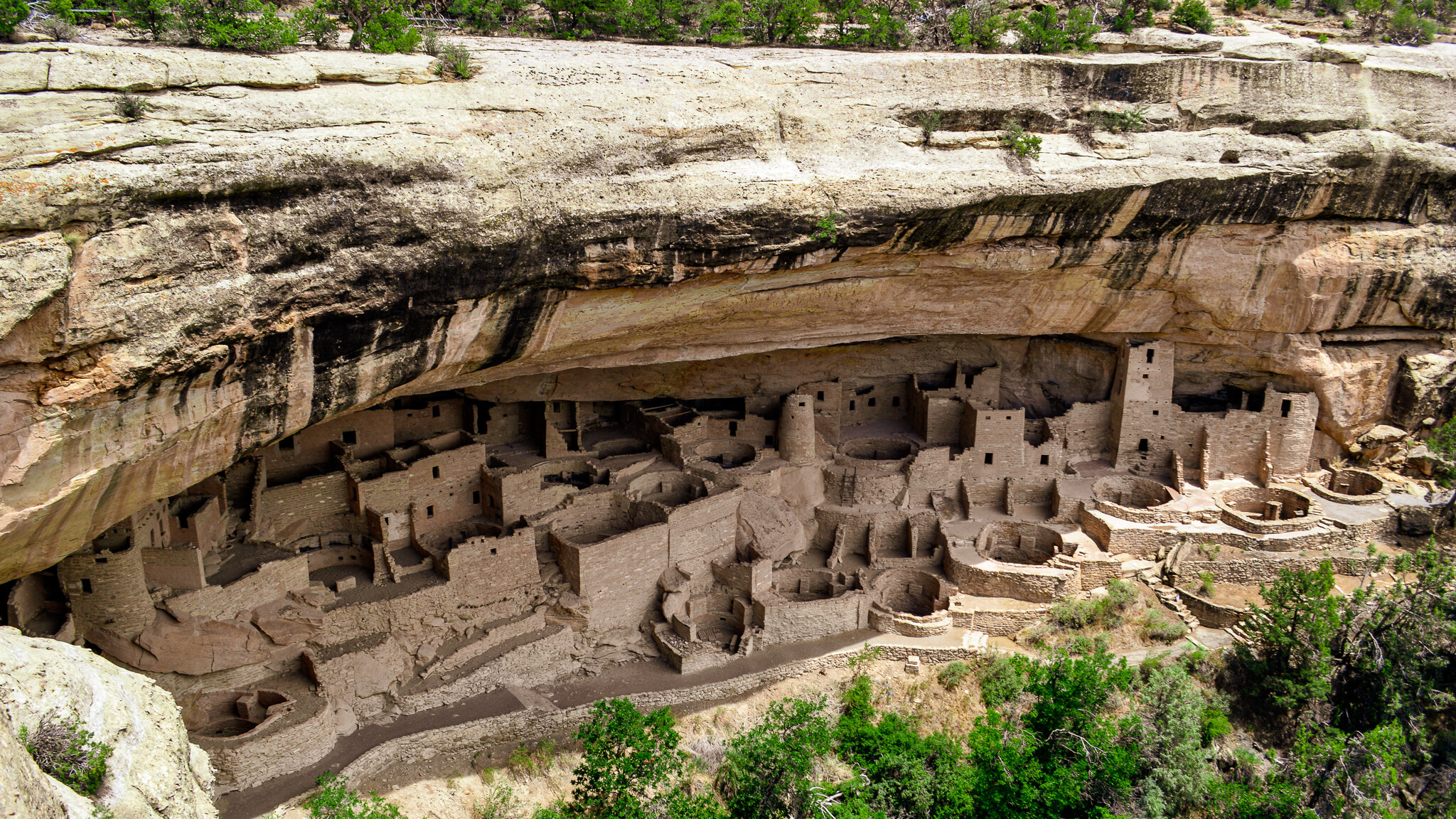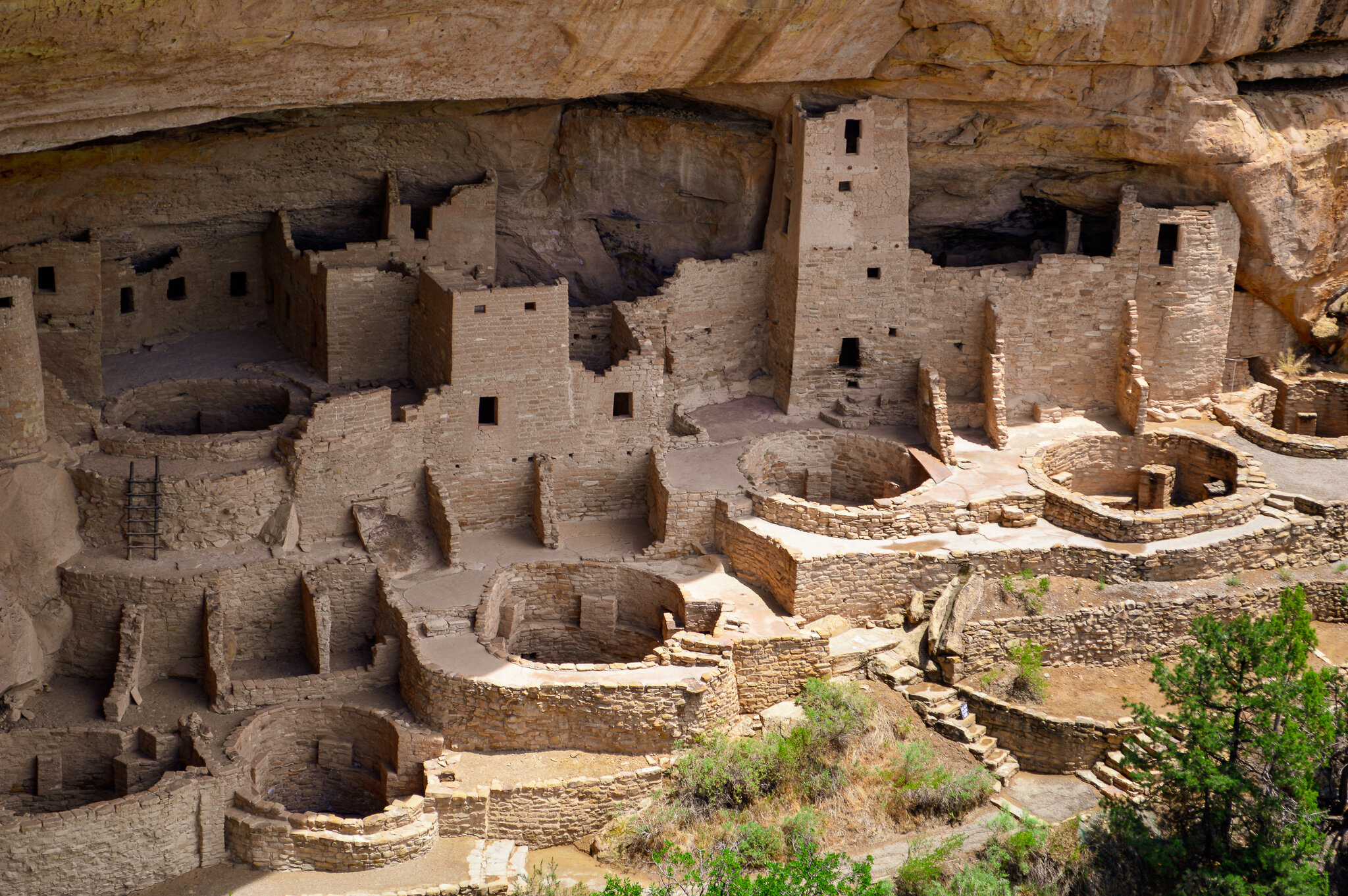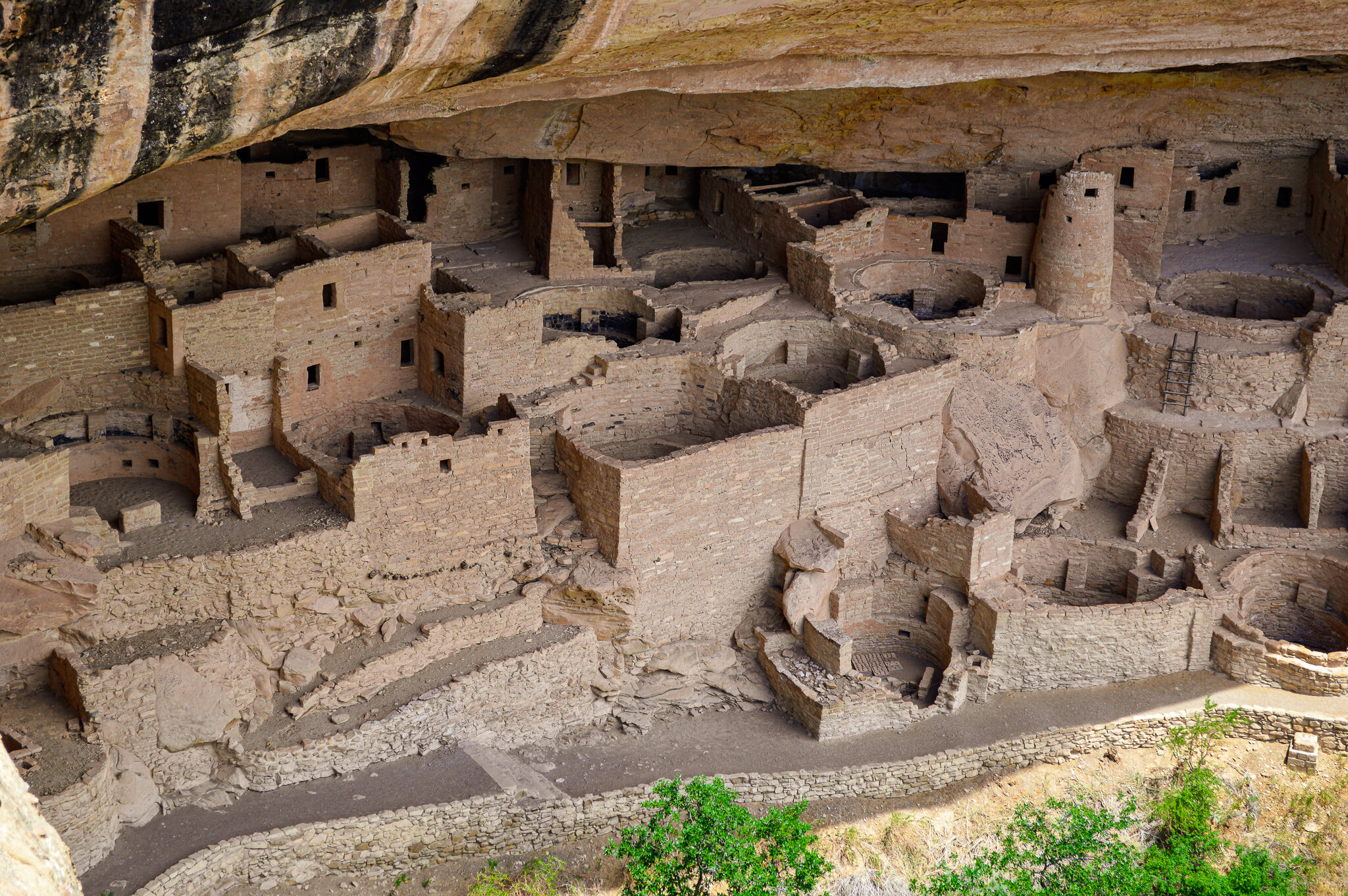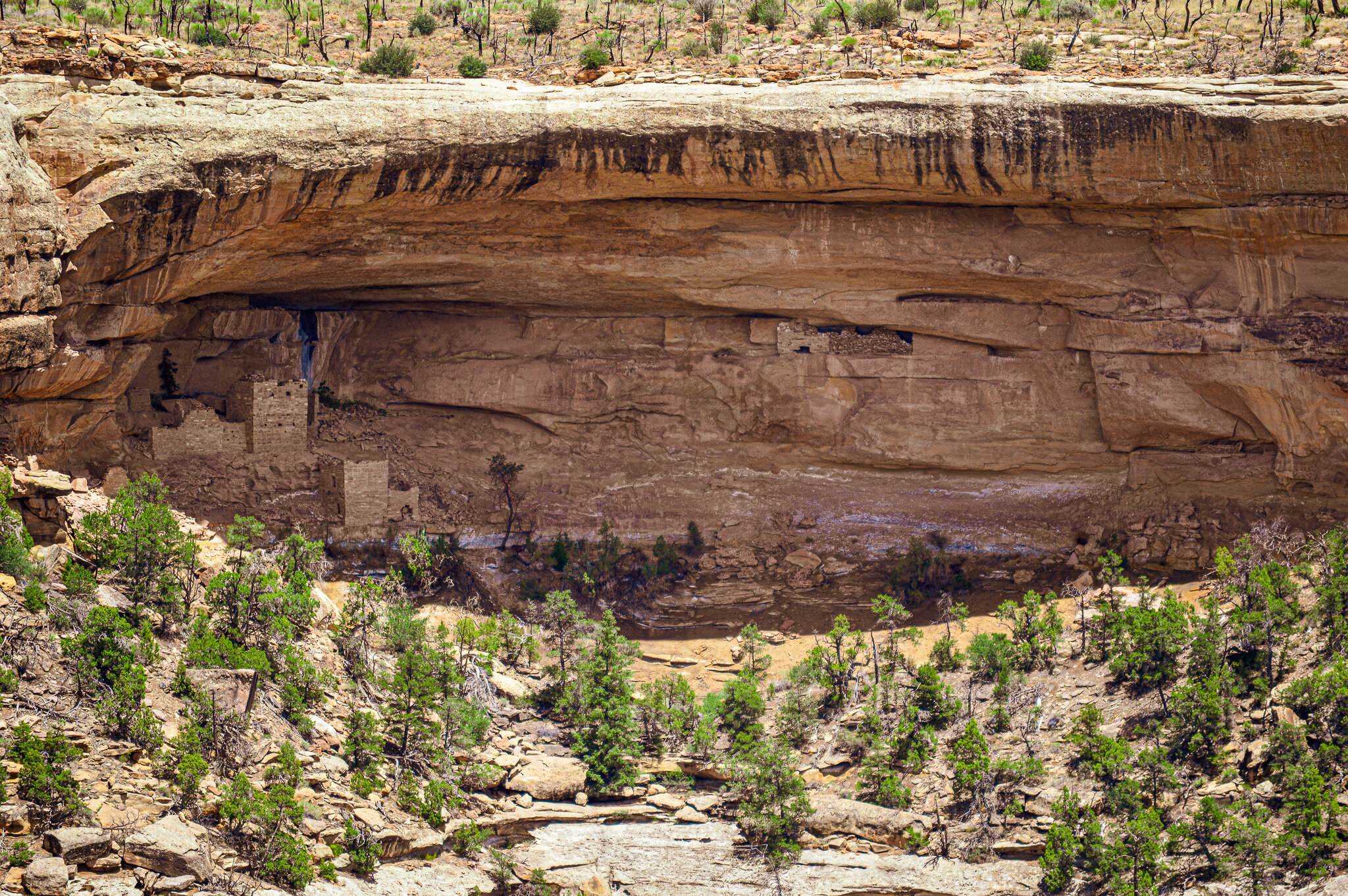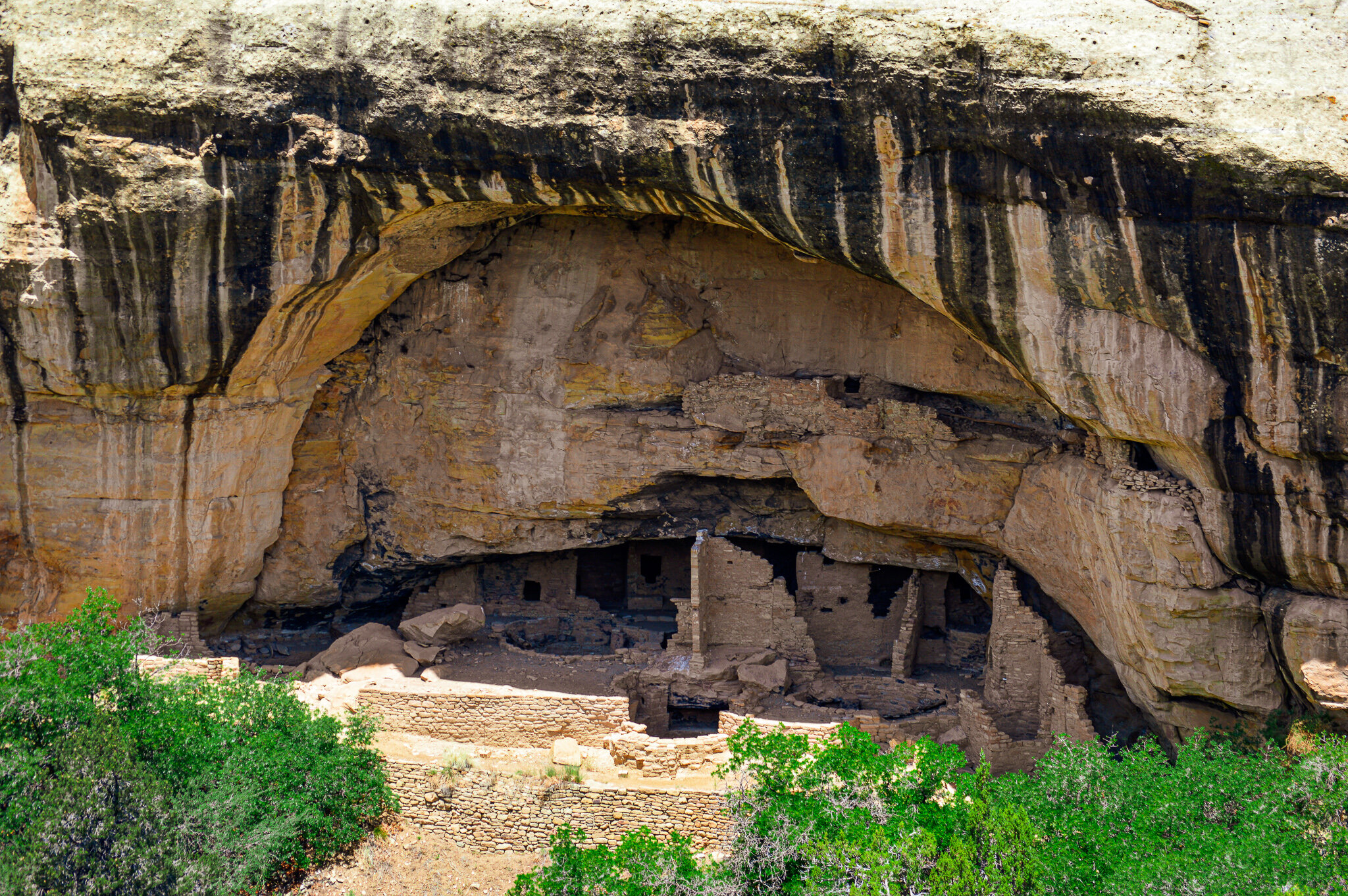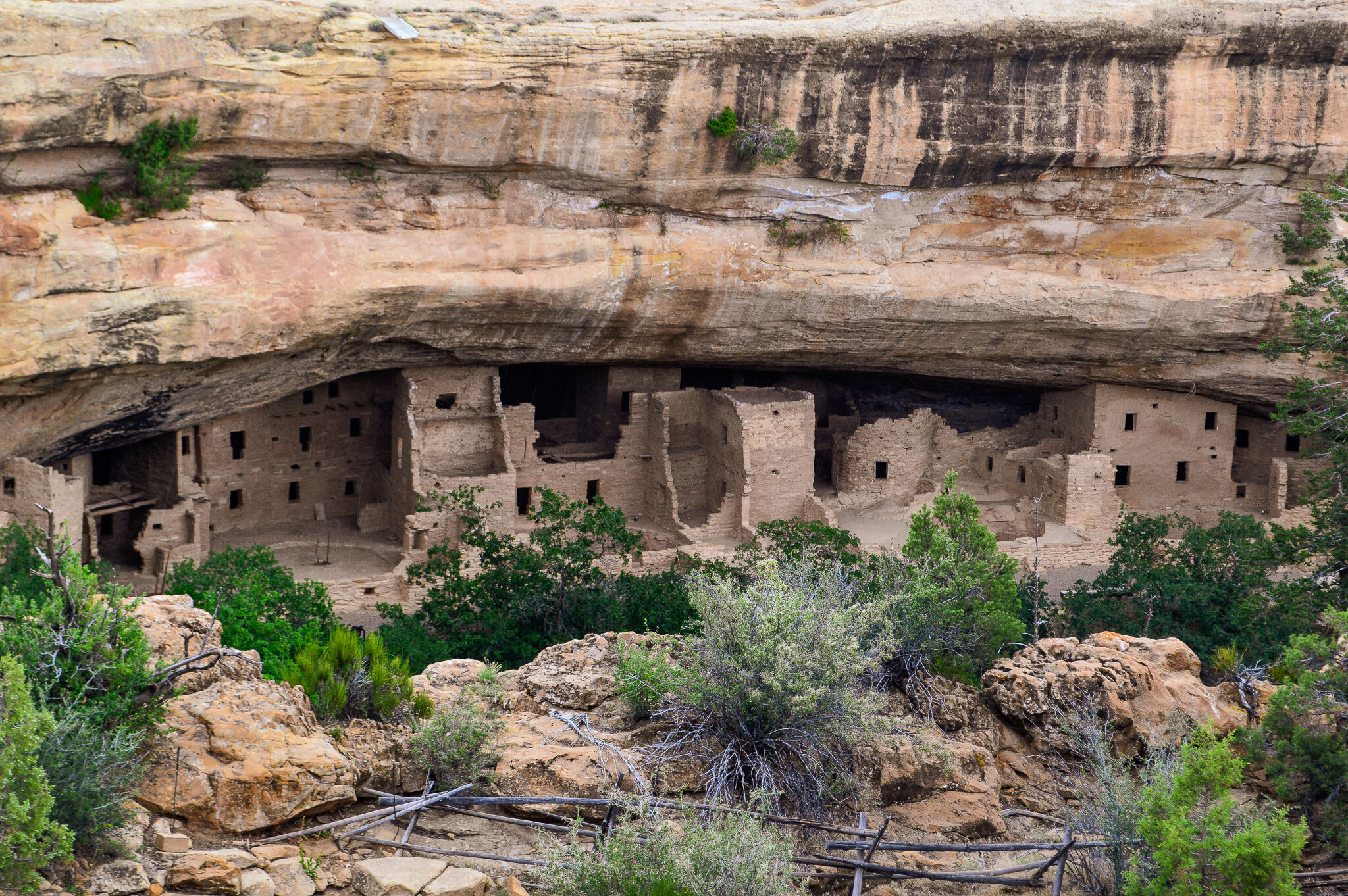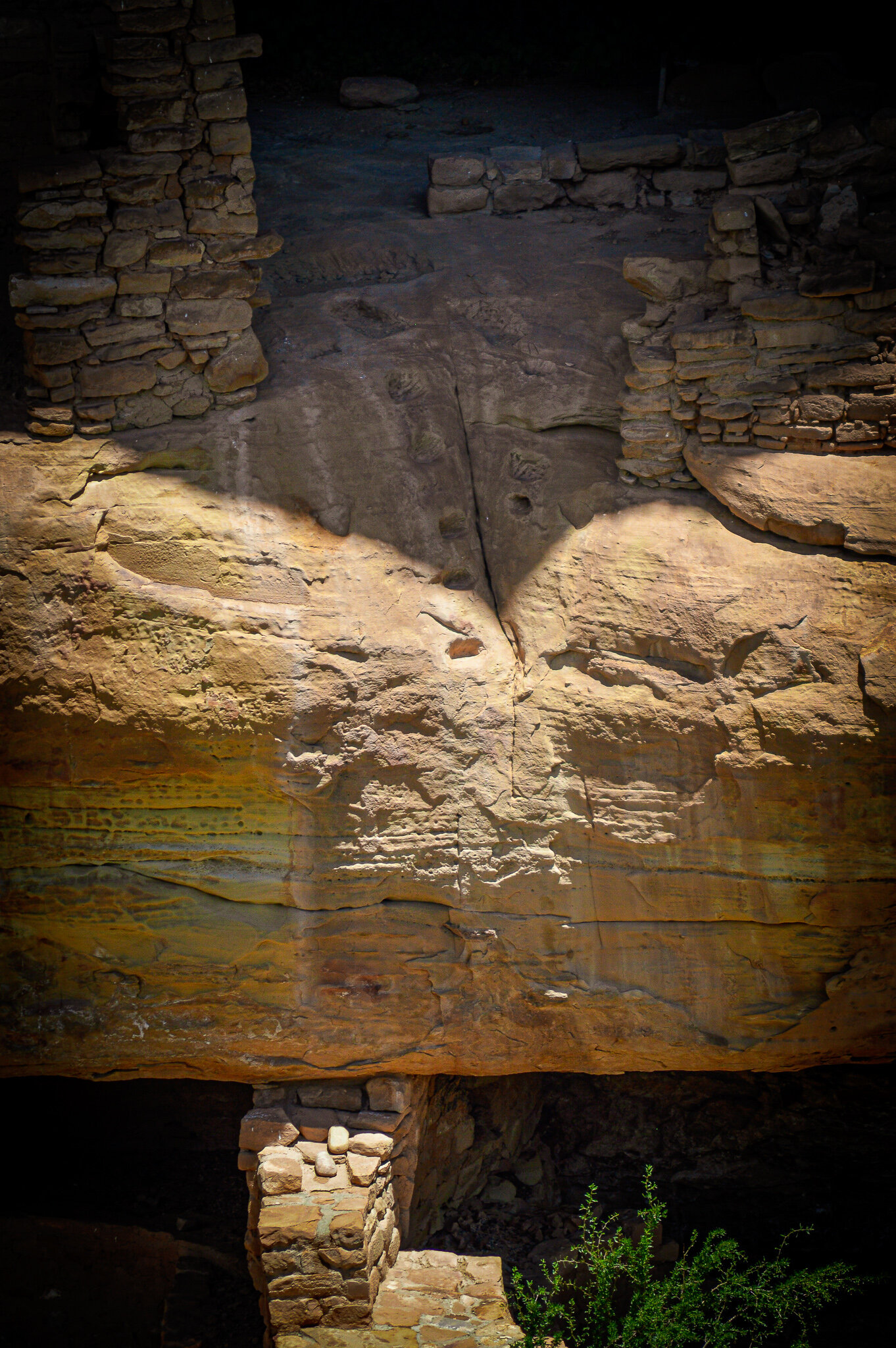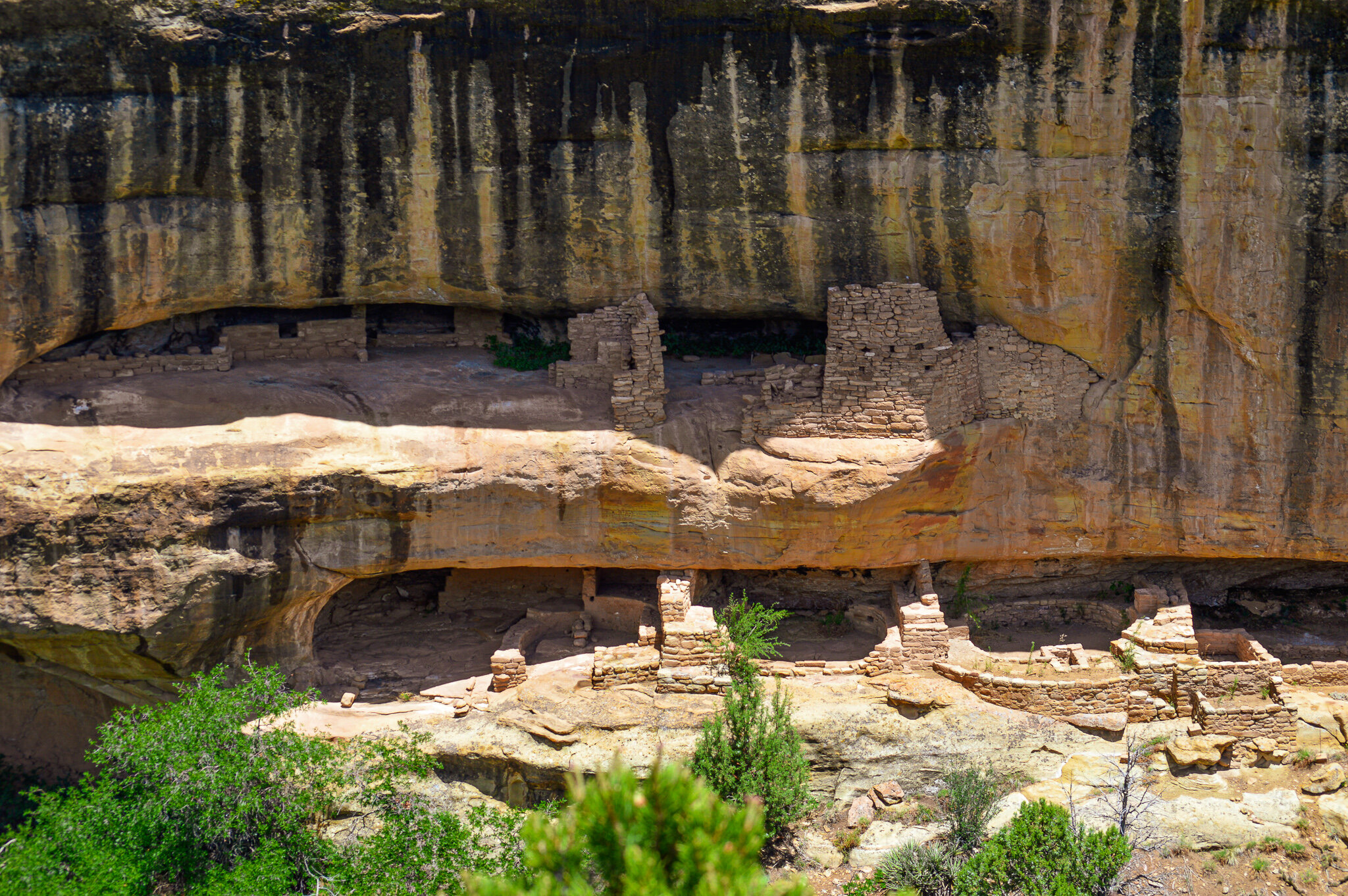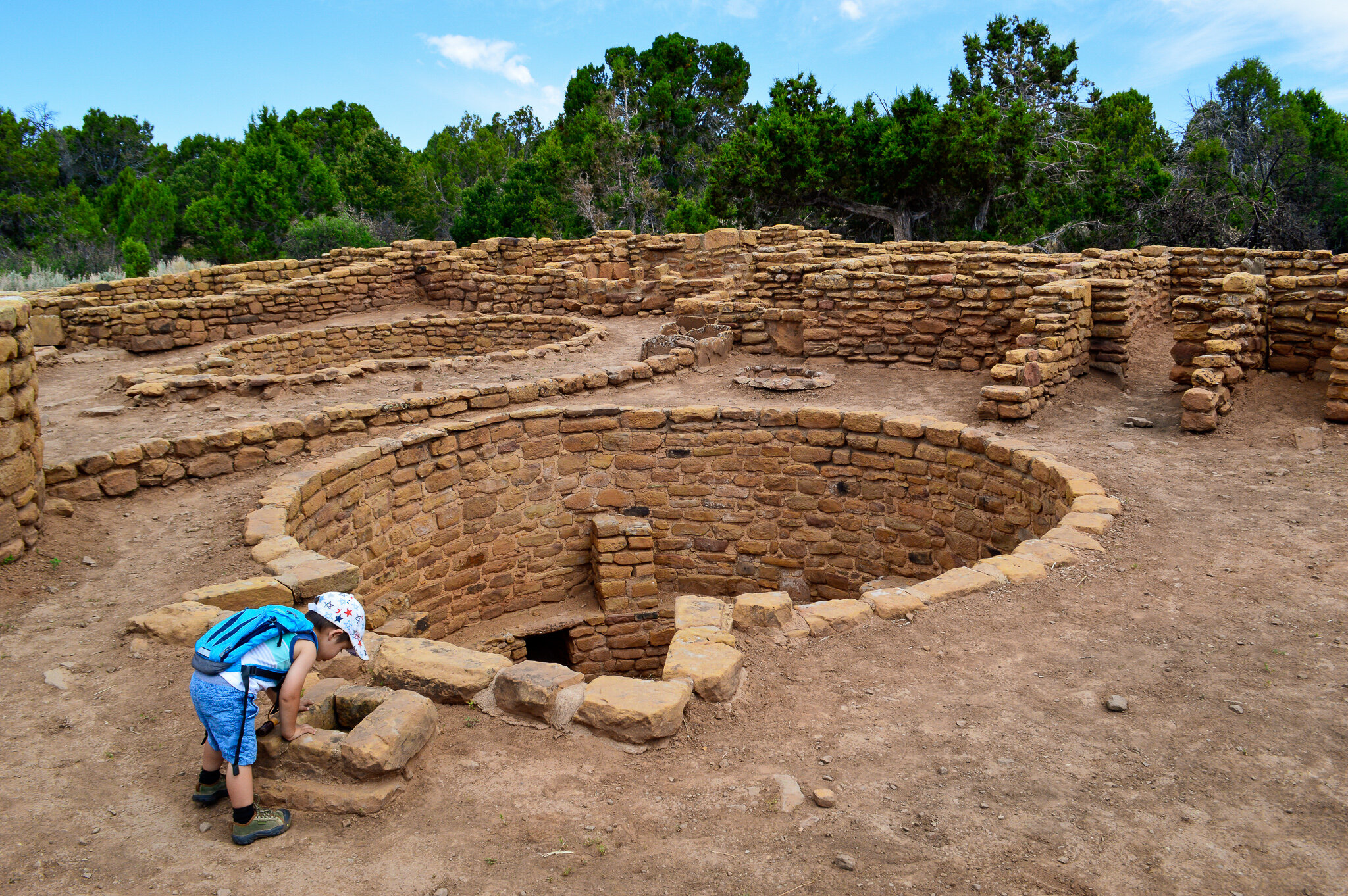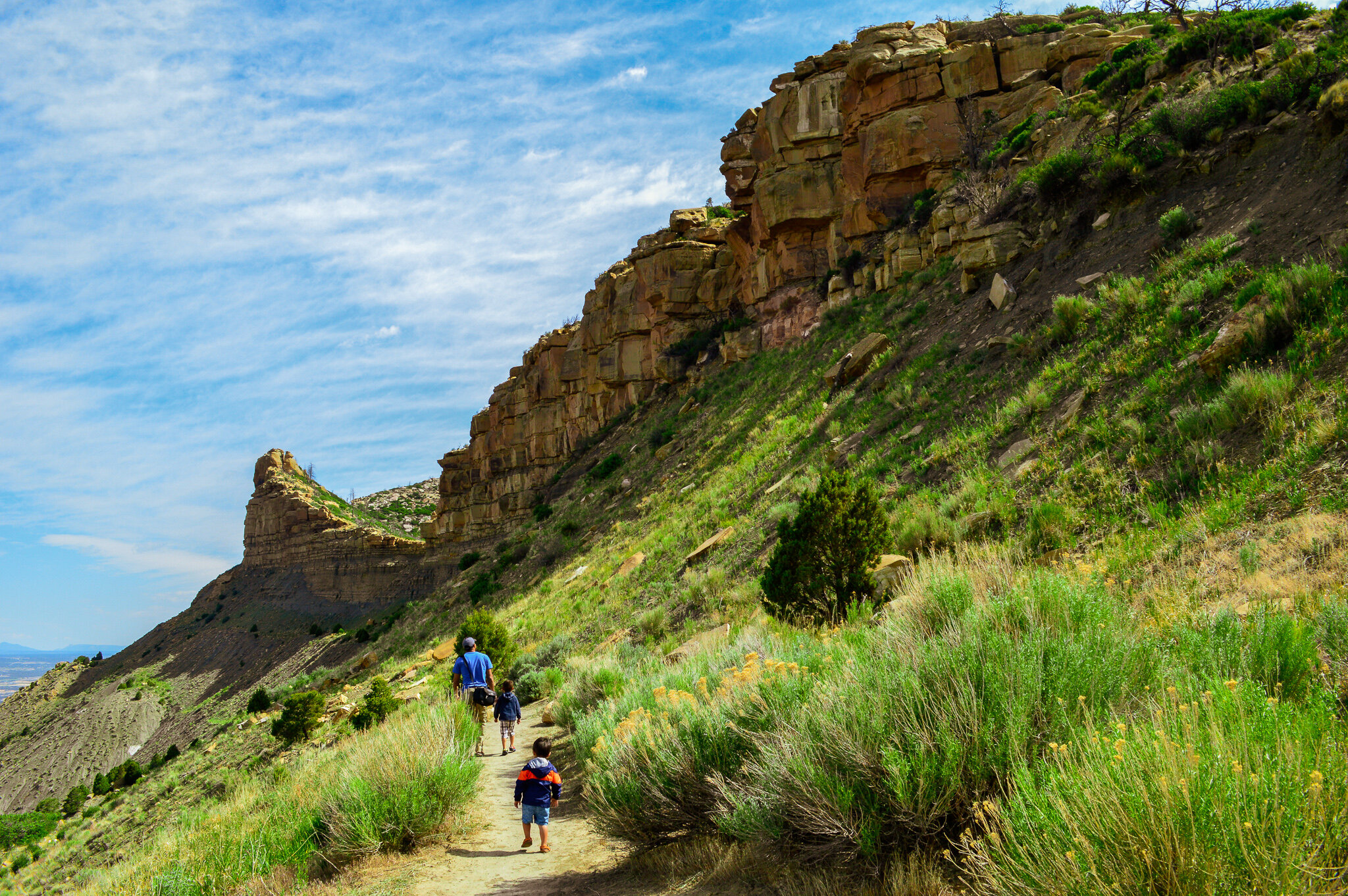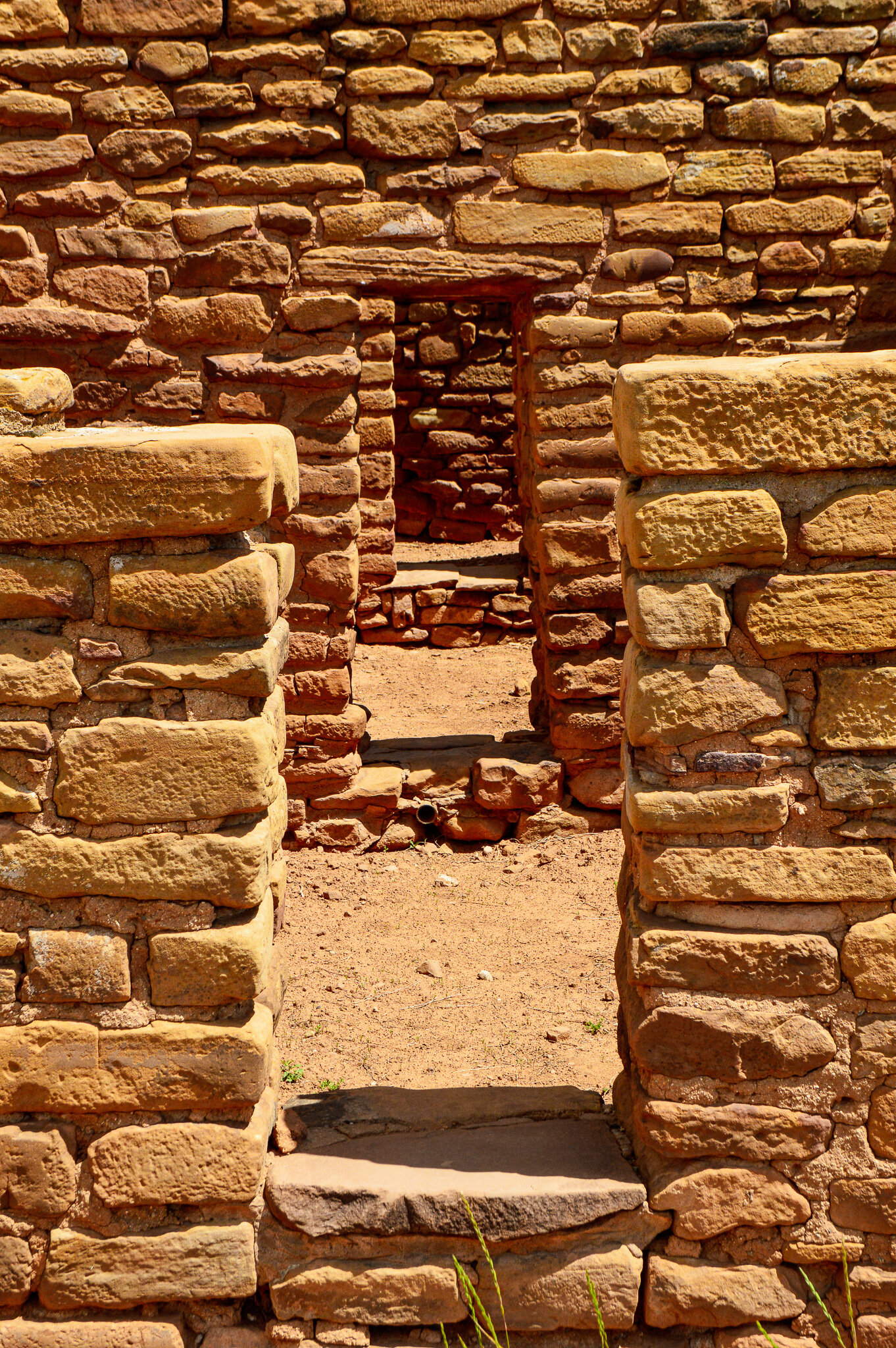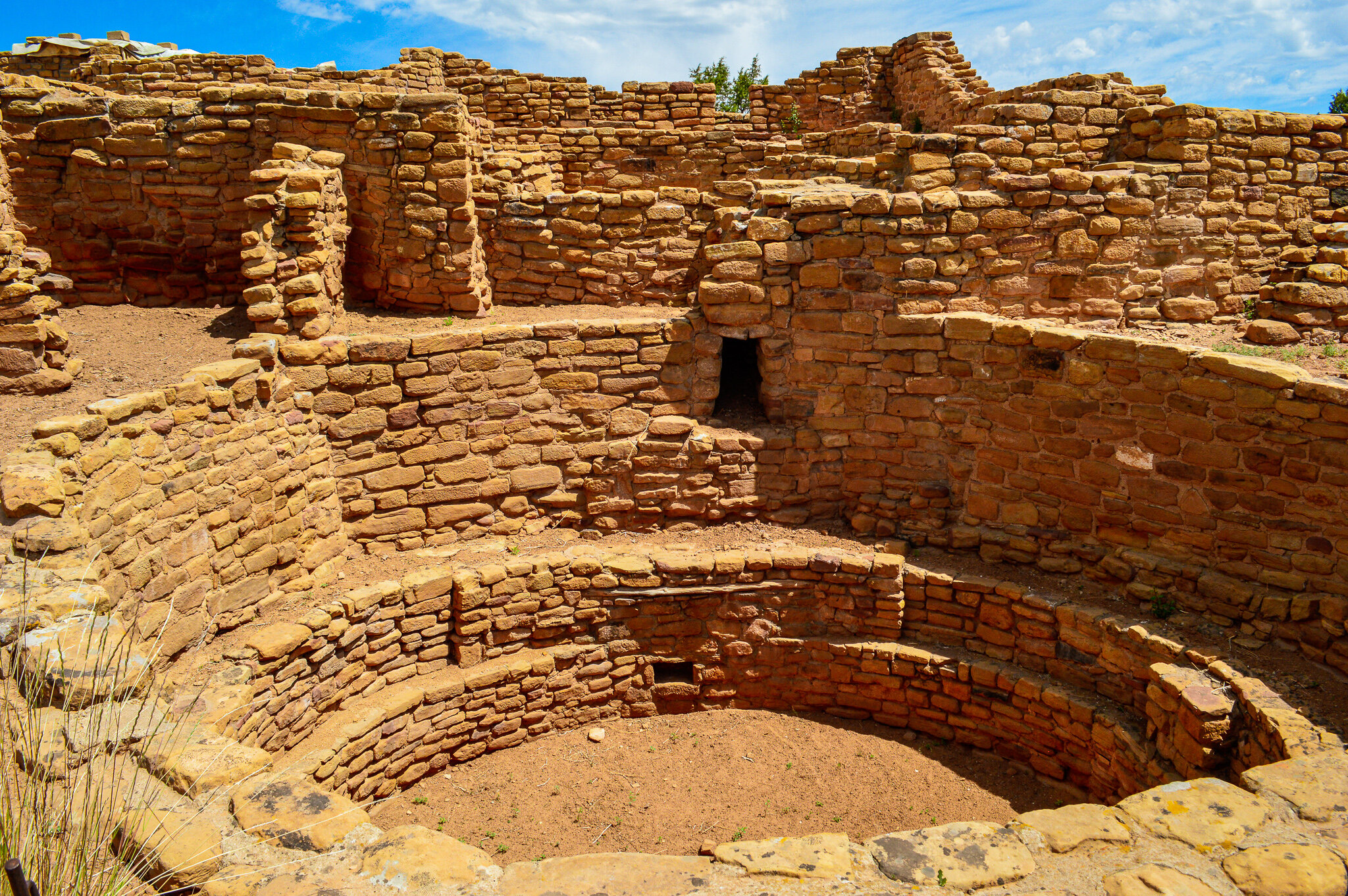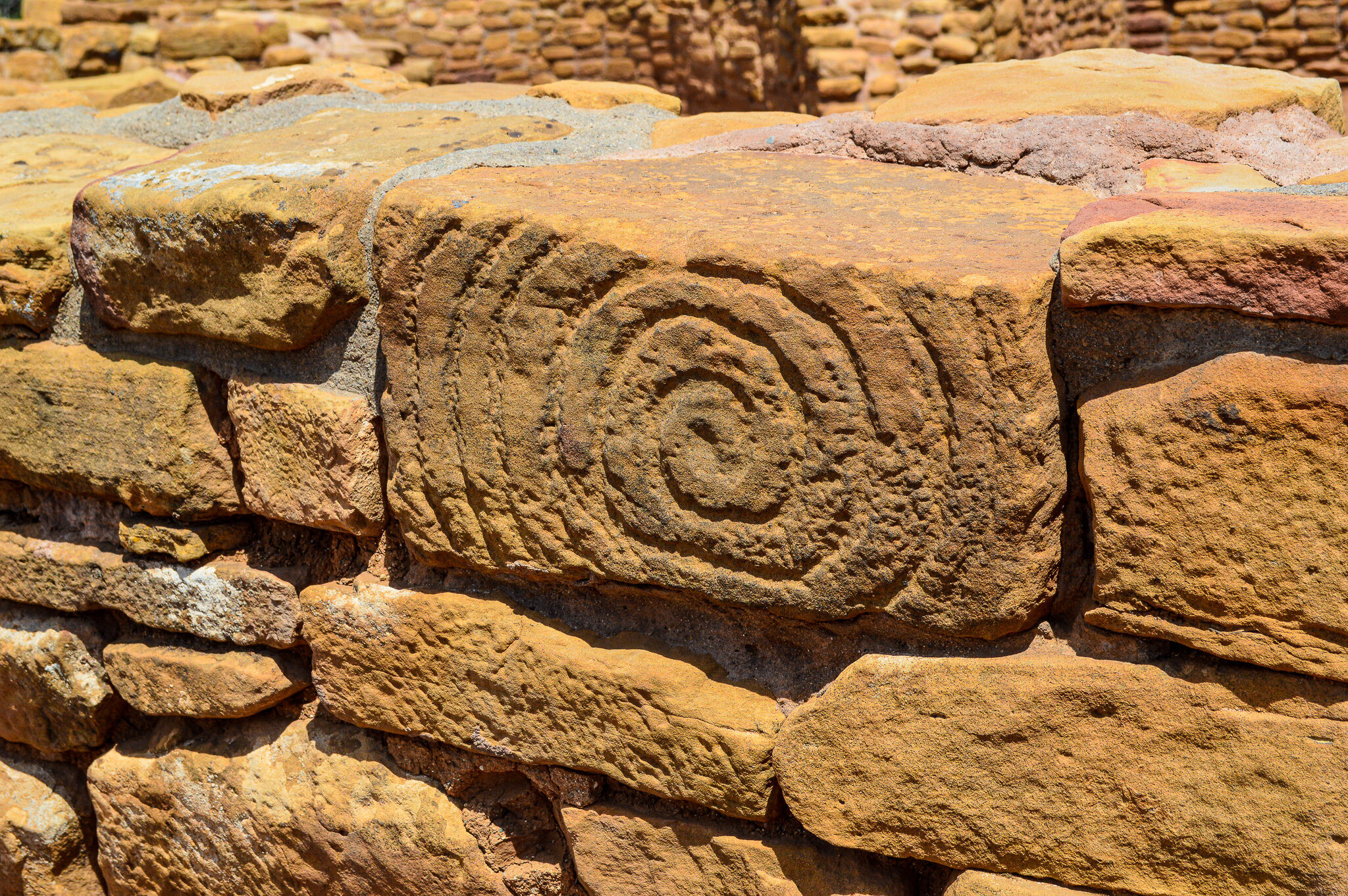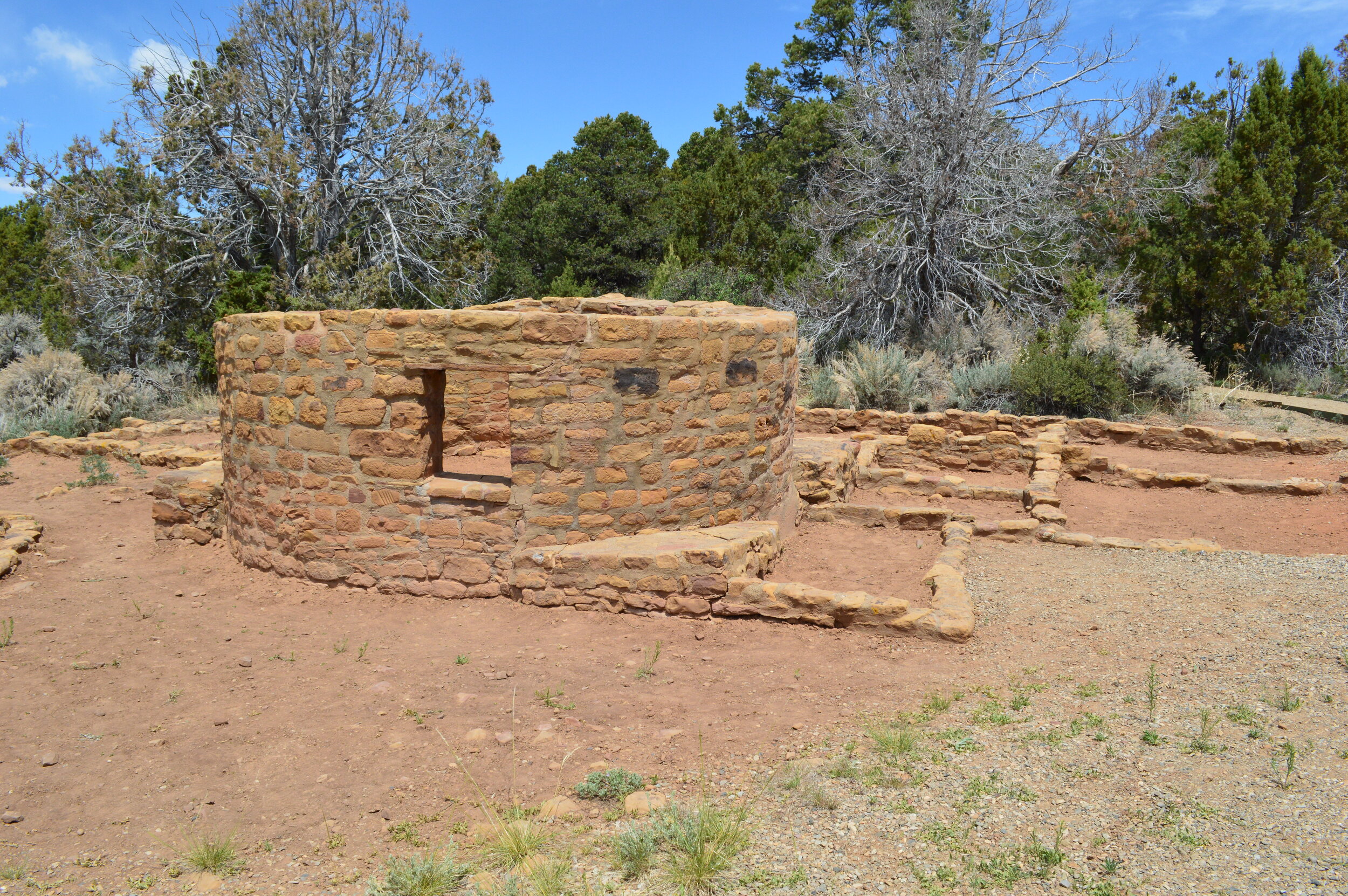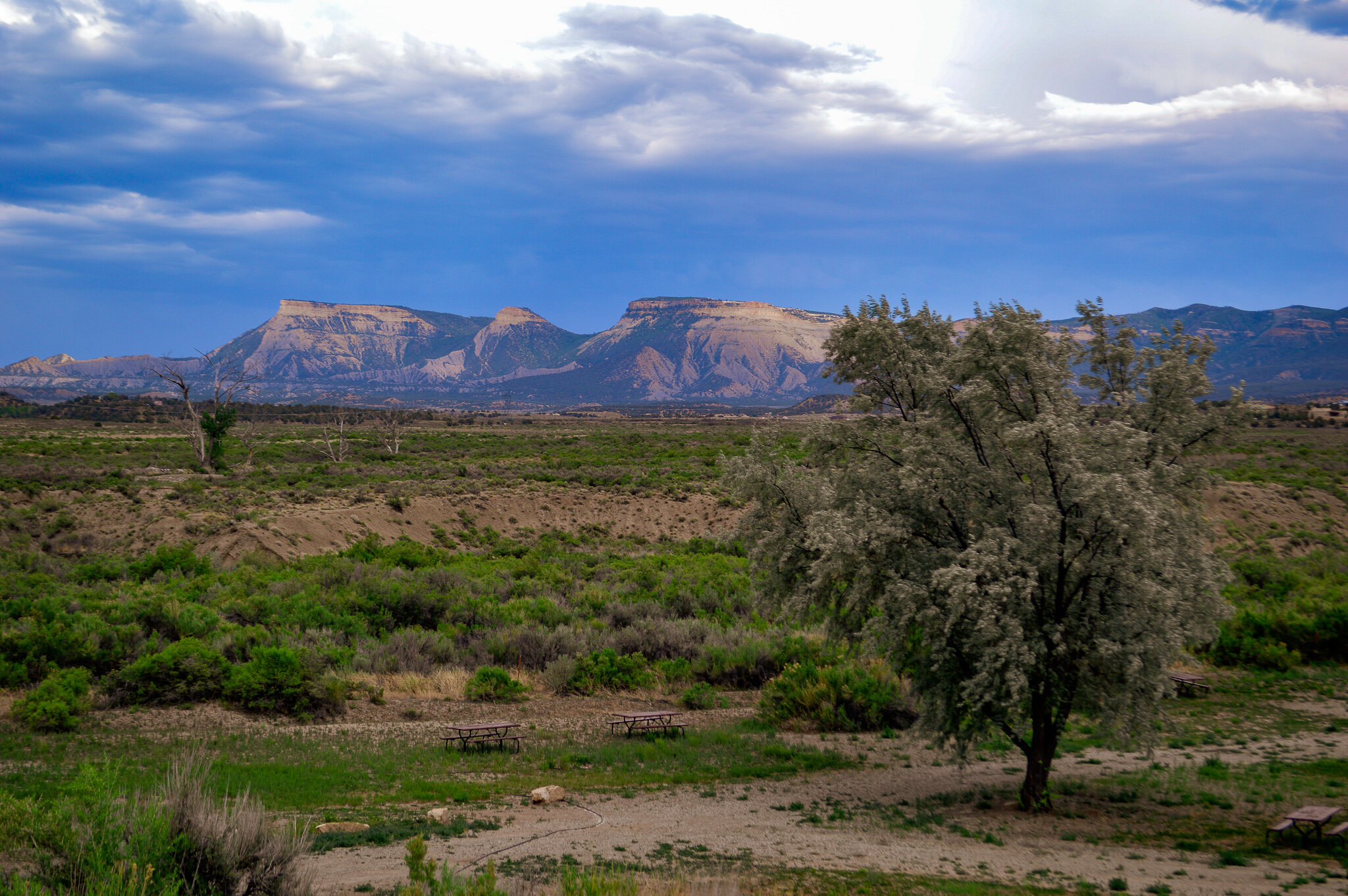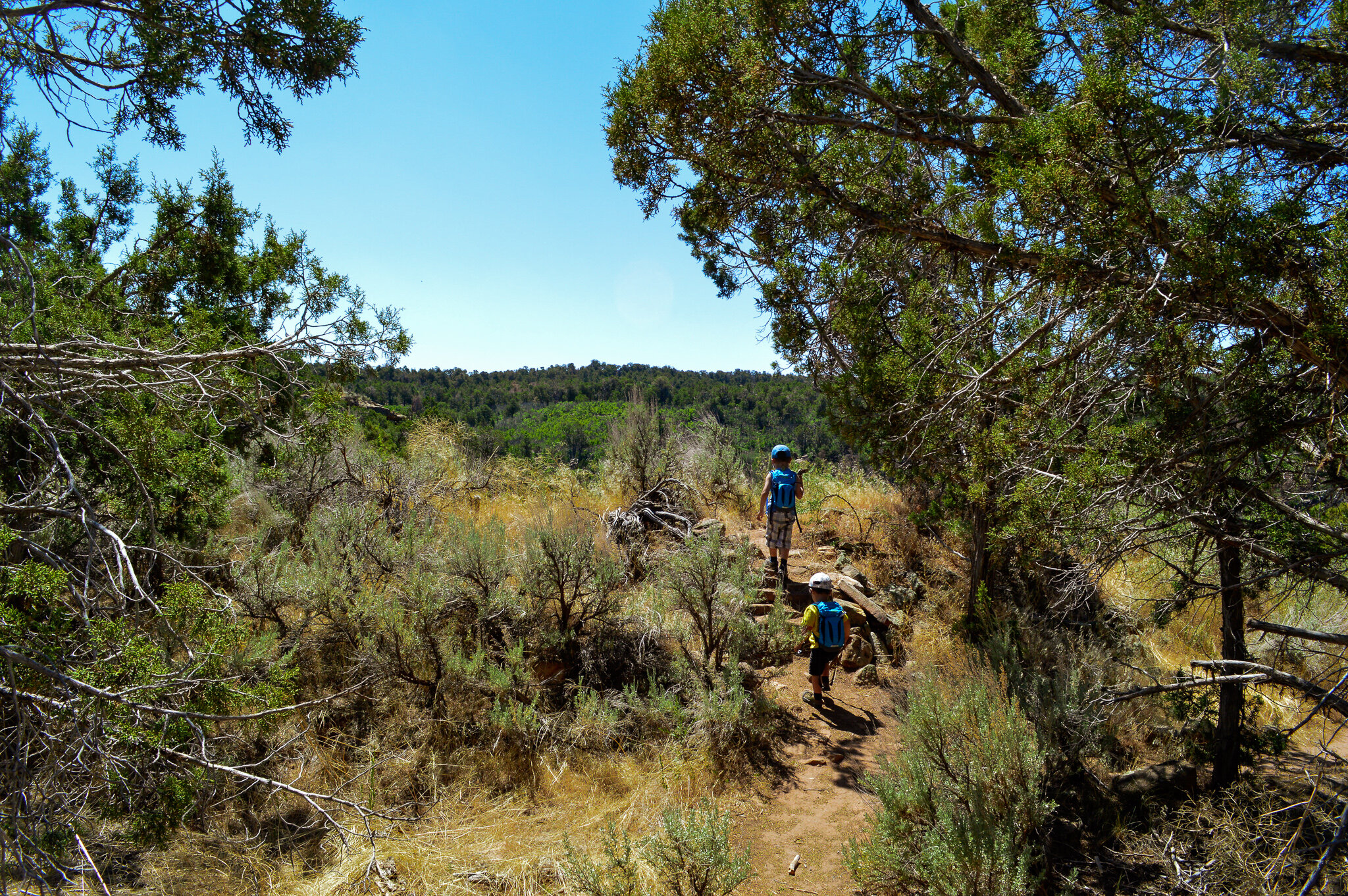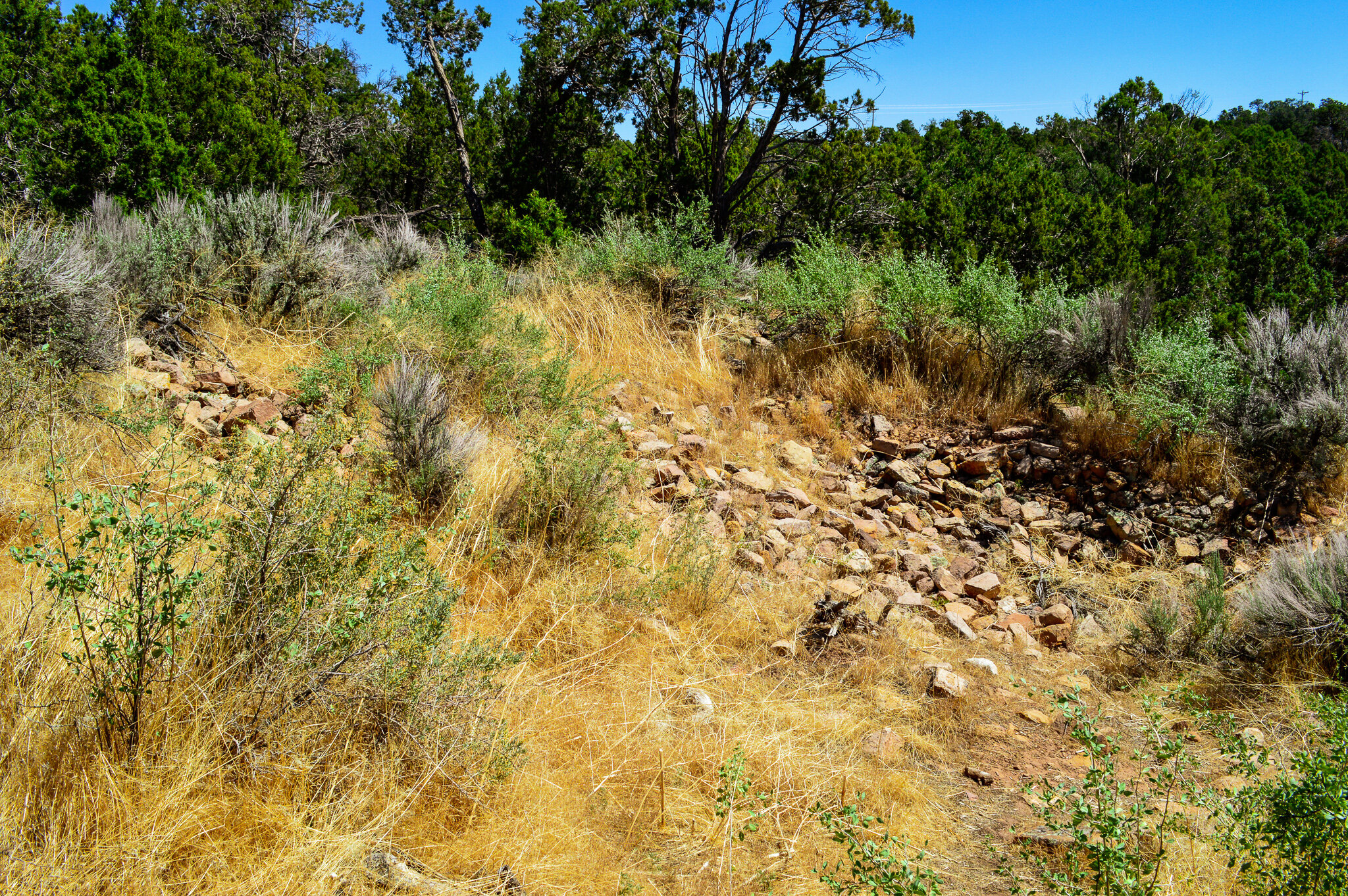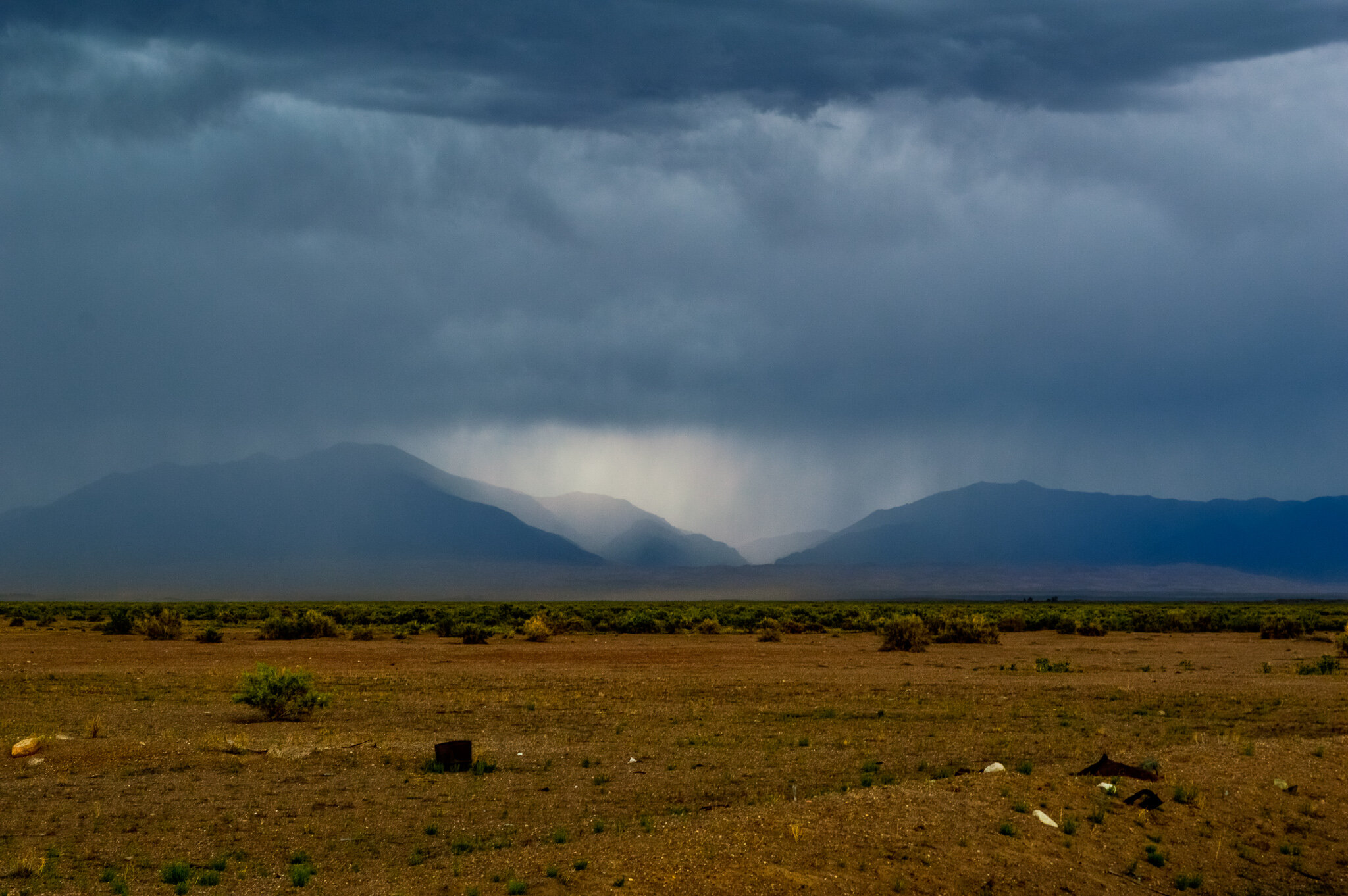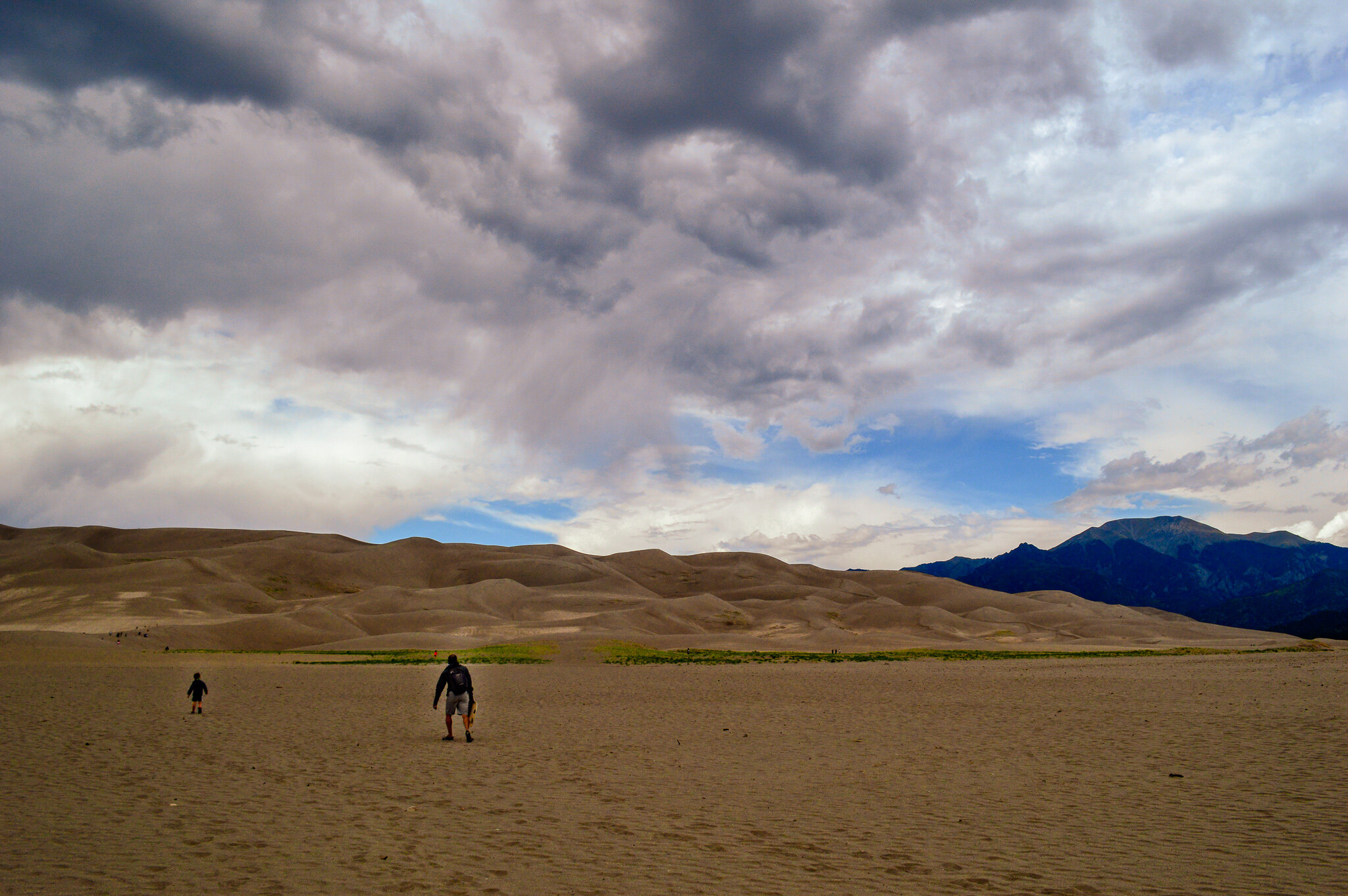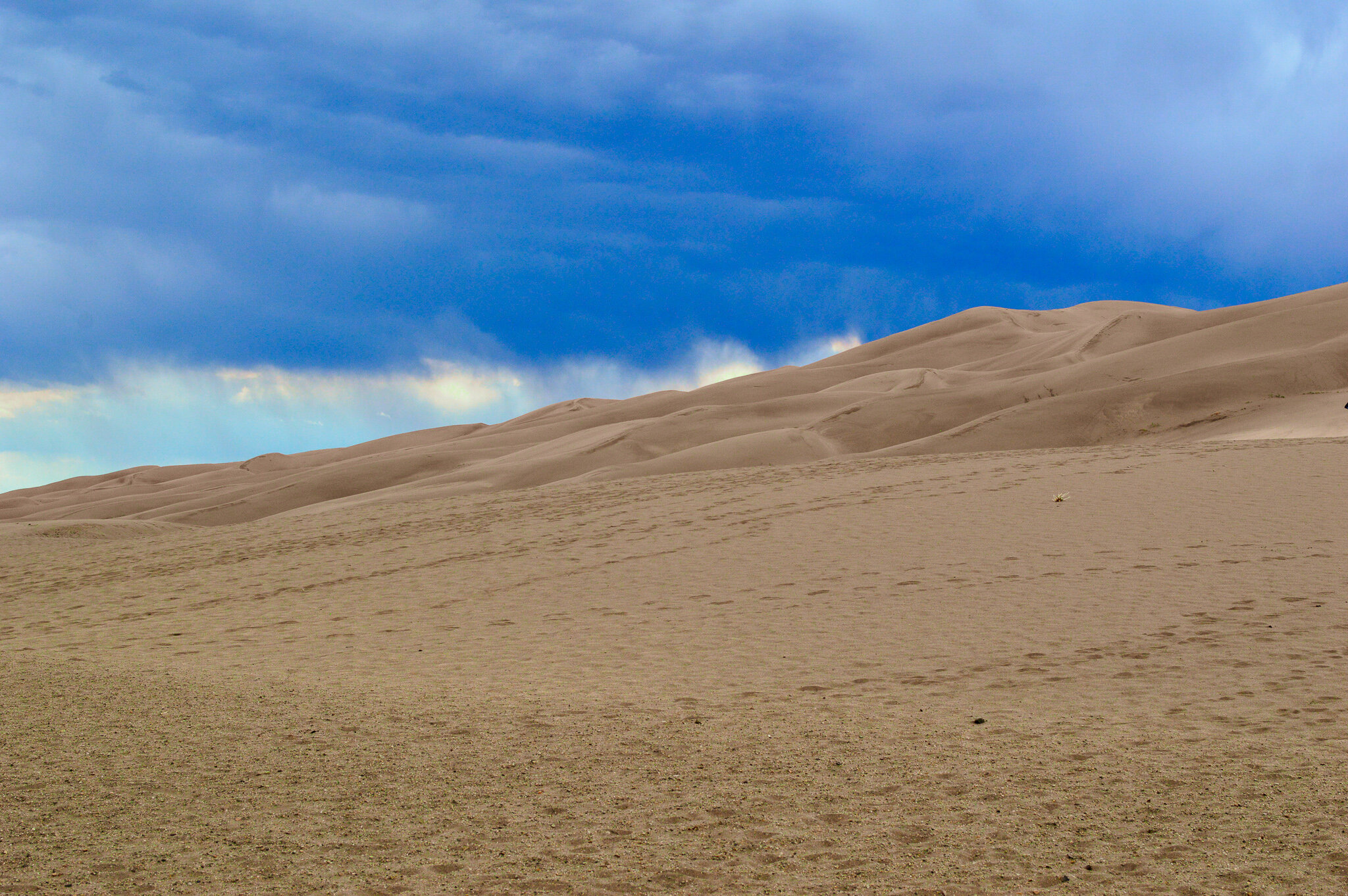Mesa Verde, Canyon of the Ancients, and Great Sand Dunes

As the summer months continued on, we found several weekends to getaway to the national parks in the southwestern corner of Colorado – Mesa Verde National Park, Canyon of the Ancients National Monument, and the Great Sand Dunes National Park. Each offered some interesting history of the native peoples, dramatic landscapes, and a fun change of pace from the alpine mountains we had been experiencing throughout the spring and summer months.
Mesa Verde
As we made our way through the San Juan Skyway, one of our primary destinations was visiting Mesa Verde NP and Canyon of the Ancients. Mesa Verde is the largest archaeological preserve in the US, with nearly 5,000 ancestral sites, including 600 cliff dwellings that date back to A.D. 550. With some of the best preserved Ancestral Puebloan archaeological sites, Mesa Verde was also designated as a UNESCO World Heritage Site in 1978 – one of the first World Heritage locations in the US.
Unfortunately, due to COVID, the cliff dwellings and tours were closed to the public, so we had to appreciate these incredible cliff dwellings from the various viewpoints throughout the park. While it would have been awesome to walk among ruins that were home to ancient peoples for more than 700 years, viewing the dwellings from afar helped to put into perspective just how substantial and impressive these dwellings are.
We also appreciated the Mesa Top Loop Rd and it’s first hand access to surface archeological sites like Sun Template along with overlooks to Cliff Palace and Square Tower House. There is an audio tour that you can download to listen to as you drive the loop, though it felt like the number of stops along the way with the kids would have made it tough to enjoy. The Far View Sites and Cedar Tree Tower were a great place for the kids to explore. Both sites offer access to towers, kivas, several small villages and a dry reservoir that all are open to the public to get up close and personal and help provide information about the landscape and life on the mesa. The kids thought we were on a really long maze as many of the building walls were not much higher than them. While certainly not as dramatic as the cliff dwellings, it was a great way to burn energy with the kids and learn about an important part of life for these ancestral puebloan people.
This park’s history is riddled with conflict, ultimately resulting in the native peoples loosing once again to the will of the white man. Many female activists like Virginia McClurg and Lucy Peabody appealed to Congress to protect the lands and helped enlist support from 250,000 women through the Federation of Women’s Clubs to publish poems and give speeches domestically and internationally on the importance of the protection of historical material from dwellings like Mesa Verde. These women even created the Colorado Cliff Dwellers Association, whose main purpose was to reclaim as many of the original artifacts as possible (total side note, the motto of the Colorado Cliff Dwellers Association was Dux Femina Facti, which translates as “feminine leadership has accomplished this” - LOVE THIS!!). While these efforts did get the attention of Congress, there were plenty of men willing to “explore” the ruins to loot and sell their own collection of artifacts. As Smithsonian Institution Ethnologist Jesse Water Fewkes described in a report to the Secretary of the Interior:
“Parties of "curio seekers" camped on the ruin for several winters, and it is reported that many hundred specimens there have been carried down the mesa and sold to private individuals. Some of these objects are now in museums, but many are forever lost to science. In order to secure this valuable archaeological material, walls were broken down ... often simply to let light into the darker rooms; floors were invariably opened and buried kivas mutilated. To facilitate this work and get rid of the dust, great openings were broken through the five walls which form the front of the ruin. Beams were used for firewood to so great an extent that not a single roof now remains. This work of destruction, added to that resulting from erosion due to rain, left Cliff Palace in a sad condition.”
Indeed the path to becoming an official national park showed the continued conflict between local tribes and non-indigenous environmentalists who wanted the park established for public use. Conflicts over who laid claim to the land came to a head-point when the US government wanted to secure more land for the park; land that was owned by Ute Indians. The Utes were naturally reluctant to agree to any sort of land deal with the government, noting that the government was seeking the tribe’s best land. Feeling they had no other choice, the Utes traded the 10,000 acres on Chapin Mesa for 19,500 acres on Ute Mountain. This may seem like a fair deal, however the US government knowingly mislead the Utes – Superintendent Jesse L Nusbaum confessed that the Ute Mountain land traded for Chapin Mesa in 1911 belonged to the tribe anyway....meaning the government had traded land that never belonged to them in the first place. As you can probably guess, the park offered little financial benefits to the Utes, despite their land swap making much of the park possible. As if that was not enough of an insult, in the 1920s, the park began offering “Indian ceremony” performances that did not actually reflect the rites of the Ancient Puebloans who lived in the cliff dwellings, nor those of the modern Utes whom the US government had stollen the land from. Instead, Navajo day laborers (who were paid unfairly) performed various dances, resulting in complete inaccuracies of the ceremonies.1 Depending on your perspective, the formation of this national park (among so many others that were previously owned by the native peoples) can be considered a costly triumph for the white public interest (the park does protect thousands of sites from destruction and seeks to educate the public on the history of the tribes; though how accurately I am not sure), or a complete betrayal of the native peoples who long inhabited this land before the arrival of white settlers.
Canyons of the Ancients
Just 12 miles west of Mesa Verde is another monument that we took a day to explore – Canyons of the Ancients. This 176,000 acre monument contains the highest known archaeological site density in the US. The landscape captures more than 6,355 sites, which reflect all aspects of human life; from villages to shrines, agricultural fields to petroglyphs and sweat lodges. We took the time to visit the Sand Canyon Pueblo, which includes the remains of about 420 rooms, 100 kivas, and 14 towers. The sites have been backfilled to protect against further destruction, however there are interpretive signs to supply insights and archaeological perspective. While you can see some of the remains, much is difficult to interpret for untrained eyes. Indeed, coming from such a magnificent site as Mesa Verde, to a site that is both older, and preserved quite differently (backfilled), we found it difficult to fully appreciate these ruins. The Anasazi Heritage Center (which has several excavated pueblos on the grounds) was closed due to COVID when we visited, and taking the kids to some of the other more excavated pueblos would have required better maps and a better off-roading vehicle than we had. So we took our half day visit to hike a bit, have a nice picnic, then head back towards home knowing this would be a stop for us on a future adventure.
Great Sand Dunes
The Great Sand Dunes are a surreal, ever shifting, 176-billion-cubic-ft sandbox at the base of the Sangre de Cristo Mountains. With the largest dune reaching 750ft above the San Luis Valley and sitting 13,604-ft above sea-level, these dunes are the tallest in North America. Grain by grain, these volcanic and ancient seabed sands washed down from the surrounding mountains and accumulated in the ancient lakes that once filled the valley. As the lakes subsided over the next millennia, opposing winds and water rebuilt and shaped the dunes atop a natural pocket at the foot of the mountains. The result is a high-altitude desert boasting refuge to many small mammals and at least a half dozen insects found nowhere else in the world.
Sand-sledding
For our family, these dunes were an awesomely spacious place to play and try our luck at sand-sledding. We visited in August, which is the one of the hotter months to visit. I mention this as the sand surface can reach up to 150°F in the summer. Lucky for us, the sand was not nearly that hot, though it was uncomfortably hot to the touch while the air temperature itself was cold enough to warrant a jacket (it was a confusing environment for the kids!). My guess is that the sand was cooled down from the massive storm that rolled thru as we pulled up. We have been to the Great Sand Dunes several times as children, but never have we seen a wall of sand blowing towards us like we did that day. Incredible as the wall of sand was, the speed in which it came and went was equally impressive. At one moment it looked as though we would drown in a wave of sand, and the next the sky was clear as if no storm had blown thru. The kids loved the sledding, though had a hard time getting back to the top of the dune after just a few trips down (ha, piggyback rides are an extra workout when climbing a sand dune!). While we had plenty of space between us and any other visitors, we found our masks particularly helpful as we rode down the dunes and were able to avoid most sand flying into our faces.
While visiting, we decided to overnight at a place I have visited several times as a child – the Sand Dunes natural hot springs. It is hard to say what the kids enjoyed more - the giant sand box that we sledded down, or the large swimming pool between 98-100°F complete with natural rockslide, kiddy pool, and onsite grill! We really appreciated the safety measures the pool staff strictly enforced, and it felt like we could really relax and enjoy a weekend getaway.
Overall, it felt great to complete another step of our journey and check off a few more national parks from the list. These were parks we had visited as kids, but it was a much different experience appreciating the history and culture as an adult and being able to share the experience with our own children. With COVID, there were certainly parts these parks that felt incomplete, but knowing that Colorado will always be in our lives, I am sure these parks will be another pit stop on this ever-changing adventure!

